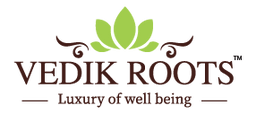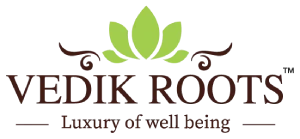Athletes and casual gym goers go through phases called Bulk vs Cut to build muscle and strength. These are planned times for gaining and losing weight, respectively. Gym Goers or normal people also use natural Ayurveda Vedik Roots capsules for maintaining the Bulk vs Cut body. Ayurveda Vedik Roots capsules help to strengthen & build muscles.
You might be curious about the specific benefits and drawbacks of bulking and cutting, as well as whether these techniques are even necessary, even though they are fairly common.
Which should you choose: cut or bulk? Which one is the superior method for developing muscle? The ins and outs of Bulk vs Cut are covered in this article, along with some benefits and drawbacks of each.
First of all, we will see the meaning or definition of Bulk vs Cut.
What is Bulk (Bulk vs Cut)?
Bulk( Ayurvedic capsules for diabetes) is a time when you intentionally eat more calories than you need. In other words, when you bulk up, you consume more calories than you expend. Gaining weight is the objective, primarily because muscle mass will increase.
The most popular combination for people to increase their muscle and strength gains while bulking is high-intensity resistance training. The objective of either strategy is to consume more calories than you expend to encourage muscle growth.
What is Cut(Bulk vs Cut)?
A cut is a time when one consumes fewer calories than one expends to reduce body fat while preserving as much muscle mass as possible.
Resistance training is still important during a cutting phase, but you might not be able to lift weights as hard as you can when you're in a bulking phase.
Difference between Bulk and Cut
Here is the difference between Bulk vs Cut.
Bulking |
Cutting |
|
Excess caloric intake and weight gain |
Loss of weight and calorie deficit |
|
Muscle growth |
Mupreservation more more more more |
|
More effective restraining possible possible possible |
Possible decline in resistance trap effectiveness potential potential potential |
|
Potential for excessive weight gain |
Fat loss |
How to Gain a Bulk body?
You can do exercise or gym as well as ayurvedic supplements or capsules such as Ayurveda Vedik Roots natural supplements or capsules. Here are some points for gaining a bulk body.
- The first step is to figure out how many calories you need to maintain your weight, or maintenance calories.
- To support muscle growth, aim for a daily protein intake of 0.7-1 grams per pound of body weight (1.6-2.2 grams per kg). Depending on your preferences, the remaining calories in your daily diet will be made up of carbohydrates and fats.
- One of the many smartphone apps available may come in handy for keeping track of your daily intake.
- To monitor your progress, weigh yourself frequently and aim for a weekly weight gain of 0.25 to 0.5% of your body weight.
How to Gain a Cut body?
- Finding your maintenance calories, or how many calories you must consume each day to maintain your weight, is also helpful before beginning a cut.
- Each day, you will subtract a certain number of calories rather than adding new ones. You will therefore consume fewer calories than you require to maintain your current weight. This will encourage the burning of fat.
- Weight preservation Due to factors like body size, genetics, and activity level, calorie requirements can vary greatly.
- It's best to maintain a protein intake of 0.6-1.4 grams per pound (1.4-3.1 grams per kilogram) of body weight and to continue resistance training if you want to help maintain muscle mass.
- Cutting phases typically include some form of cardio or step counting to provide additional calorie burning and fat loss in addition to a gradual calorie restriction through diet.
Also Read :- Potential of Shilajit for Healthy Weight Gain
Exercise for Muscle Building: -
Here is a list of the exercises that are suggested in the muscle-building advice
- Bench press
- Lunges
- Leg Press
- Barbell row
- Deadlifts
Exercise for Gaining Cut body type: -
Here is a list of recommended workouts to help you get body cuts.
- Squats and Chin-ups
- Crunches
- Seated Shoulder Presses
- Dips
- Bench press
Pros and Cons of Bulk vs Cut
When combined with a suitable resistance training program, bulking and cutting both have many advantages. Nevertheless, each has some drawbacks that should be considered.
Pros and Cons of Bulking: -
Pros |
Cons |
|
Enhances strength |
May result in excessive weight gain |
|
Promotes muscle growth |
Can alter blood lipid levels |
|
Heightens bone density |
May cause insulin sensitivity issues |
|
Allows for effective exercise recovery |
Can reduce insulin sensitivity |
|
Encourages libido |
Can affect exercise capacity negatively |
Pros and Cons of Cutting :-
|
Pros |
Cons |
|
Encourages fat loss |
Mild muscle loss is typical |
|
Improves muscle appearance |
Can lower libido and certain sex hormones |
|
May enhance health parameters |
May leave you feeling famished |
| Can improve insulin sensitivity |
May lower bone density |
| Enables more efficient athletic movement | Could affect sleep quality negatively |
Foods to Eat and Avoid for Bulk and Cut Body
Bulking Food
Foods to eat:
- Lean proteins: beef, chicken, fish, turkey, pork, yogurt, cottage cheese, reduced-fat cheese, protein powders
- High-quality carbs: oats, quinoa, whole grain pasta, rice cakes, breakfast cereals, white and sweet potatoes
- Healthy fats: olive oil, avocado, nuts, nut butter, fatty fish, seeds (chia, hemp, flax)
- Legumes: beans, chickpeas, kidney beans, navy beans, black beans, Great Northern beans
- Dark leafy greens: spinach, Swiss chard, collard greens, kale
- Occasional foods: pizza, regular pasta, baked goods, full-fat cheese, high-sugar cereals, pan-fried meats
Foods to avoid -
- Highly processed foods: deep-fried foods, chips, fast food, and full-fat ice cream, plus processed meats like bacon, sausage, ham, and salami.
- Saturated fats: margarine and certain oils
- Beverages: soft drinks, sweetened coffee, sweet tea, lemonade, and other sugary beverages
Cutting Food
Foods to eat:
- Lean proteins: chicken breast, lean ground turkey, lean cuts of beef/pork, fish, extra firm tofu, high-protein plant-based meat substitutes, low-fat cottage cheese, low-fat cheese, eggs, egg whites
- Limited healthy fats: olive oil, avocado, nuts, nut butter, seeds
- Legumes: beans, chickpeas, kidney beans, navy beans, black beans, Great Northern beans
- Fibrous carbs: brown rice, quinoa, sweet potatoes, whole grain pasta, oats, low-sugar cereals, rice cakes
- Lower sugar fruits: apples, pears, peaches, berries, melon, grapefruit, oranges, figs, kiwis, and plums.
Foods to Avoid -
- High-calorie foods: pizza, deep-fried foods, creamy pasta sauce, gyros, fast food, ice cream, baked goods, and certain casseroles.
- Sugar-sweetened beverages: soft drinks, iced tea, lemonade, nectars, juices, and sweetened coffee and tea.
- Processed foods: most frozen prepackaged meals, chips, ham, pâté, salami, packaged cookies and cakes, and packaged ramen noodles.
- High-fat proteins: fatty cuts of pork and beef, regular ground chicken and turkey, bacon, chicken wings and thighs, and fatty fish.
Bulk and Cut Body: What Do You Want?
Deciding between bulking and cutting is crucial for achieving your desired physique. For increasing strength and muscle mass, a calorie-dense bulking diet is ideal, despite some fat gain. If you aim to look leaner and lose fat, opt for a nutrient-rich cutting diet. Consult a certified trainer before starting any diet or workout regimen.
Conclusion
Bodybuilders alternate between bulking and cutting to maximize lean mass and minimize fat. A cutting diet focuses on nutrient-dense, low-calorie foods for fat loss, while bulking emphasizes calorie-dense foods for muscle gain. Assess your body composition and goals to choose the best strategy.





